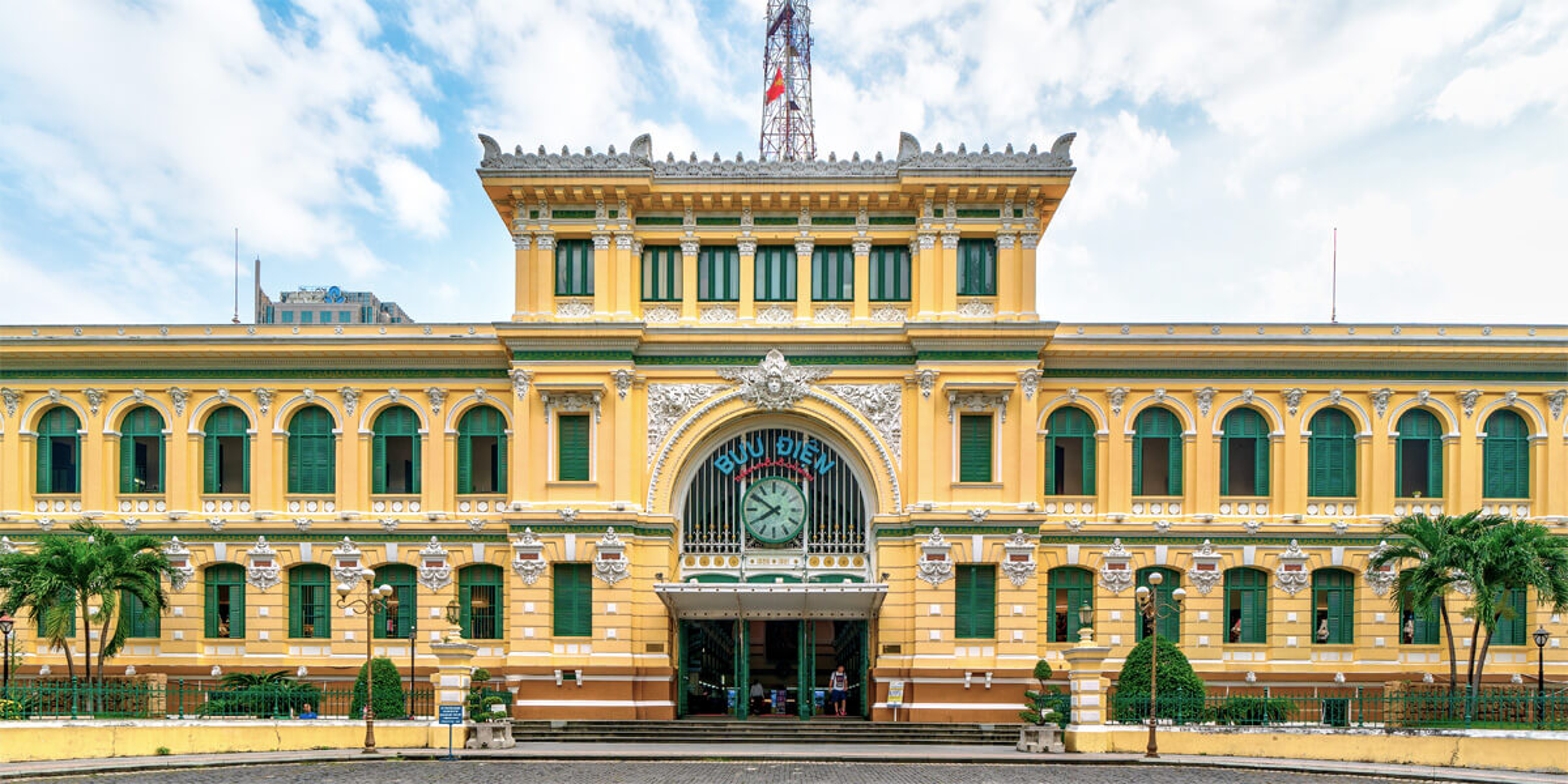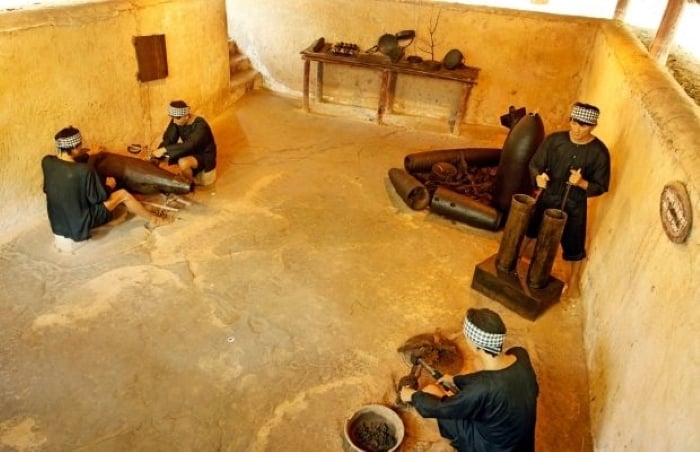- Tham gia
- 3/4/25
- Bài viết
- 403
- Thích
- 2
- Điểm
- 18
Continuing our journey through the rich tapestry of historical places in Vietnam, Ho Chi Minh City offers more remarkable sites that reveal the country’s fascinating past. Each landmark tells its own unique story about Vietnam’s heritage, culture, and the challenges it has overcome. Whether you are passionate about history or simply want to immerse yourself in authentic local experiences, these additional must-visit sites will enrich your understanding of Vietnam’s history.
The Central Post Office
 One of the most elegant historical places in Vietnam located in Ho Chi Minh City is the Central Post Office. This grand building stands as a testament to French colonial architecture, blending European design with Vietnamese details. Constructed in the late 19th century by architect Gustave Eiffel, who also designed the Eiffel Tower, the Central Post Office remains one of the city’s architectural gems.
One of the most elegant historical places in Vietnam located in Ho Chi Minh City is the Central Post Office. This grand building stands as a testament to French colonial architecture, blending European design with Vietnamese details. Constructed in the late 19th century by architect Gustave Eiffel, who also designed the Eiffel Tower, the Central Post Office remains one of the city’s architectural gems.
Inside, visitors can admire high vaulted ceilings, ornate wrought iron decorations, and beautifully detailed maps of the region from the colonial period. The building is still operational as a post office, where locals and tourists alike send postcards and letters. The Central Post Office is not only a hub of communication but also a place to experience the harmony of history and daily life in Ho Chi Minh City.
Cu Chi Tunnels
 Located about 70 kilometers from Ho Chi Minh City, the Cu Chi Tunnels are among the most famous historical places in Vietnam related to the Vietnam War. This intricate underground network was used by Viet Cong soldiers as hiding spots, communication routes, and supply pathways during the conflict.
Located about 70 kilometers from Ho Chi Minh City, the Cu Chi Tunnels are among the most famous historical places in Vietnam related to the Vietnam War. This intricate underground network was used by Viet Cong soldiers as hiding spots, communication routes, and supply pathways during the conflict.
Tourists visiting the Cu Chi Tunnels can crawl through sections of the tunnels, witness the hidden trapdoors, and learn about the ingenious strategies used by Vietnamese fighters. The site offers a vivid, immersive experience that sheds light on the guerrilla warfare tactics and the resilience of the Vietnamese people during wartime. The Cu Chi Tunnels are not only a historical attraction but also a symbol of endurance and survival.
Jade Emperor Pagoda
 Another notable historical place in Vietnam found in Ho Chi Minh City is the Jade Emperor Pagoda. Built in the early 20th century by the Chinese community, this temple is a stunning example of religious and cultural history.
Another notable historical place in Vietnam found in Ho Chi Minh City is the Jade Emperor Pagoda. Built in the early 20th century by the Chinese community, this temple is a stunning example of religious and cultural history.
The pagoda is dedicated to the Jade Emperor, the supreme Taoist god, and features intricate wood carvings, statues, and altars. Its atmospheric interior and tranquil gardens provide visitors with a glimpse into the spiritual life and architectural styles that have influenced Vietnam’s diverse cultural fabric. The Jade Emperor Pagoda is a peaceful retreat amid the city’s hustle and bustle, inviting reflection and admiration.
Conclusion
Ho Chi Minh City is undoubtedly one of the richest cities in Vietnam when it comes to historical places. From the architectural splendor of the Central Post Office and the spiritual calm of the Jade Emperor Pagoda to the powerful legacy of the Cu Chi Tunnels, the city offers a diverse range of experiences that tell the story of Vietnam’s past. Exploring these historical places in Vietnam helps visitors appreciate the complexity and beauty of the nation’s heritage. For anyone planning to visit Ho Chi Minh City, these landmarks are essential stops that provide deeper insights into the history and spirit of Vietnam.
View more information at: Amanaki Saigon Boutique Hotel
The Central Post Office

Inside, visitors can admire high vaulted ceilings, ornate wrought iron decorations, and beautifully detailed maps of the region from the colonial period. The building is still operational as a post office, where locals and tourists alike send postcards and letters. The Central Post Office is not only a hub of communication but also a place to experience the harmony of history and daily life in Ho Chi Minh City.
Cu Chi Tunnels

Tourists visiting the Cu Chi Tunnels can crawl through sections of the tunnels, witness the hidden trapdoors, and learn about the ingenious strategies used by Vietnamese fighters. The site offers a vivid, immersive experience that sheds light on the guerrilla warfare tactics and the resilience of the Vietnamese people during wartime. The Cu Chi Tunnels are not only a historical attraction but also a symbol of endurance and survival.
Jade Emperor Pagoda

The pagoda is dedicated to the Jade Emperor, the supreme Taoist god, and features intricate wood carvings, statues, and altars. Its atmospheric interior and tranquil gardens provide visitors with a glimpse into the spiritual life and architectural styles that have influenced Vietnam’s diverse cultural fabric. The Jade Emperor Pagoda is a peaceful retreat amid the city’s hustle and bustle, inviting reflection and admiration.
Conclusion
Ho Chi Minh City is undoubtedly one of the richest cities in Vietnam when it comes to historical places. From the architectural splendor of the Central Post Office and the spiritual calm of the Jade Emperor Pagoda to the powerful legacy of the Cu Chi Tunnels, the city offers a diverse range of experiences that tell the story of Vietnam’s past. Exploring these historical places in Vietnam helps visitors appreciate the complexity and beauty of the nation’s heritage. For anyone planning to visit Ho Chi Minh City, these landmarks are essential stops that provide deeper insights into the history and spirit of Vietnam.
View more information at: Amanaki Saigon Boutique Hotel
